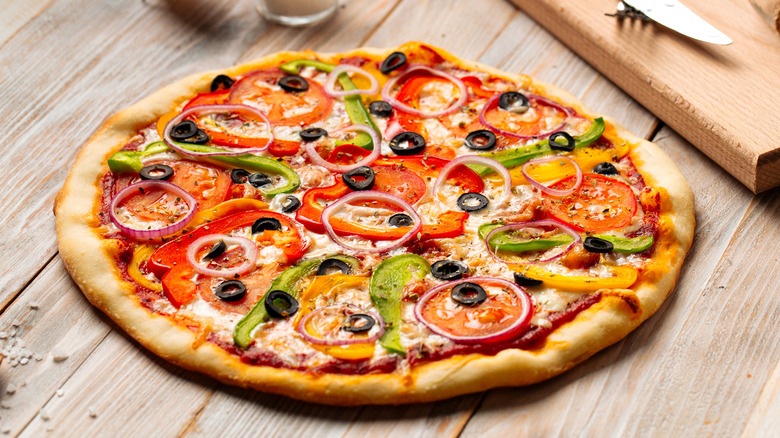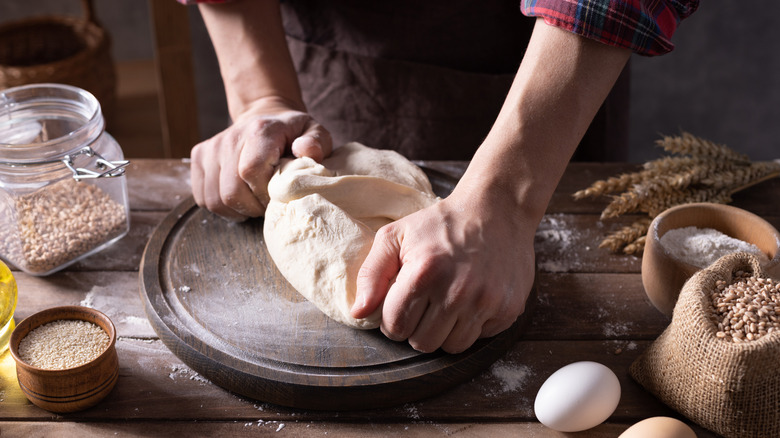Why You Need To Pay Attention To The Temperature Of Your Pizza Dough
Though ordering a pizza for delivery is convenient, there are a few reasons people might prefer to make their own at home. With a little bit of practice, homemade pizza ensures that every slice will come out exactly as you want it, with customized toppings and the perfect bake. Plus, it might be a little cheaper to make your own with ingredients you already have on hand — like leftover marinara sauce from pasta night, or veggies fresh from the grocery store (per Baking Steel).
One important part of making your own pizza is ensuring that you have a good dough. Without a good base to start with, the rest of your pizza might be tolerable at best. Eater reports that most local pizza joints will even sell balls of dough to customers, so if you have a go-to pizza restaurant, you can try to recreate your favorite menu item at home. But when you're making your own homemade pizza, remember that it's important to pay attention to the temperature of the dough — it could ruin the whole dish if you don't.
You could destroy your dough
When working with pizza dough at home, it is important to make sure it is at a good temperature to work with. If you purchase premade dough ahead of dinnertime or make your own from a recipe before you're ready to bake it, storing it in the fridge can help keep the dough fresh. If the dough is left out, it could overinflate, and eventually collapse (via Our Everyday Life). Storing the dough in the fridge will slow the rising process, allowing it to proof adequately.
However, you will want to make sure that your dough is not too cold when you begin working with it. Food Network suggests allowing your dough to rest outside of the fridge for up to an hour in order to get it to room temperature. Cold dough can leave gluten tense, making it harder to work with. Warmer, relaxed dough will take shape more easily, ensuring that you don't accidentally overwork it.
What happens if you overwork dough?
If you accidentally overwork your pizza dough, you might end up with a different texture than you'd like. According to Bob's Red Mill, kneading the dough is an important step in making your pizza, because it builds strong gluten. The site recommends kneading for roughly four to six minutes.
Bob's Red Mill states that if you knead for any longer than necessary, the texture of the baked crust might be crumby and dense, and feel more like bread. The ideal pizza crust should have a light, fluffy texture, while still being solid enough to hold up toppings.
If you accidentally over-knead your dough, don't worry, Baking Kneads suggests a fix you can try. If you have the time, allowing the dough to sit and rest for double the recommended time in the recipe could allow it to rise again. Once the dough has risen a little, shape it quickly without overworking it. Then, allow it time for a second rise, and bake as normal.


